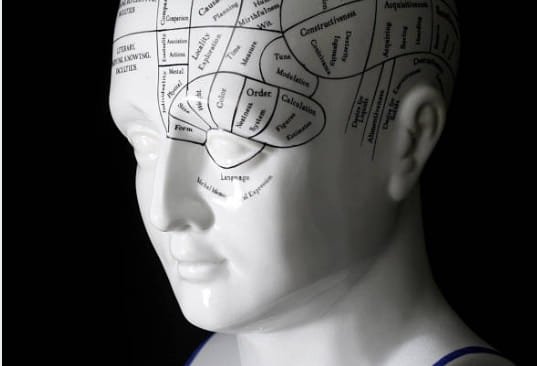
by admin | Jun 6, 2022 | Health, Mind
Metacognition – What Is It exactly?
Understanding The Art Of Knowing That You Know Today, we will talk about the fascinating technique referred to as “metacognition.” The definition of this technique is mainly referred to as the “awareness and understanding of one’s own thought processes.” To put it more simply, it’s knowledge about when and how specific strategies can be used to solve problems or to learn.
The term comes from the root word “meta,” which means further or on top of. It is considered an essential part of learning successfully. Besides, metacognition is directly linked to the self-reflection of strengths and weaknesses and the strategies a person devises to achieve a goal. Practically, this is the foundation of culturally intelligent leadership, to underscore how a person thinks about a problem or situation.
History of Metacognition

Metacognition was introduced by John H. Flavell in 1976. He first defined the term as “one’s knowledge concerning one’s own cognitive processes and products or anything related to them.”
But even before Flavell, there have been cases in human history that have embarked on the study of the great importance of monitoring and regulating one’s comprehension process.
Also, Vygotsky (1896 – 1934) and Piaget (1896 – 1980) have both added self-regulation and self-reflection to their cognitive development theory.
How Does It Help Us?
Encouraging metacognition is a relatively straightforward and cheap way to improve learning. The Education Endowment Foundation describes the approaches as having “consistently high levels of impact” while acknowledging that they can also be challenging to implement.
Educational consultants Dr. Robin Fogarty and Brian Pete developed a couple of easy research-based examples of how metacognition can help people in general. Not only that, but it gives teachers and parents insightful tips on teaching kids throughout kindergarten to middle school easier.
Everyday Examples
Alright, well, the thing here is that sometimes, whether we know this term or not, we use metacognition! One great example is to think about the last time you’ve reached the bottom of a page and thought to yourself, “What did I read?”.
Your brain just became aware of something you did not know, so instinctively, you might have reread the last sentence and then gone through the whole page again. Or maybe you’ll just rescan some of the paragraphs to fill in the information gaps!
In whatever way you decide to capture the missing information, this momentary awareness of knowing what you know or do not know is called metacognition.
When we notice ourselves having an inner dialogue about our thinking, and it prompts us to evaluate our learning, we are experiencing metacognition at work. This is a perfect way to inspect your thought process and inflict or demand more from your reading and studying habits.
Not to mention that it can be put to use in real life. Many people feel like they lose their train of thought through the day because of various external or internal reasons. Most of the time, we simply have not been trained to be more efficient in paying attention.
Why It’s Worth Exploring
Reflective thinking is at the heart of metacognition. However, in today’s world of constant chatter and technology, reflective thinking can be at odds. Practically, technology can prevent people, mostly young, from seeing what is in front of their eyes.
John Dewey, a renowned scientist and education reformer claimed that experiences alone were not enough. Instead, what is critical is an ability to perceive and then weave meaning from the threads of our experiences. The function of metacognition and self-reflection is to make meaning.
The creation of meaning is at the heart of what it means to be human. This is precisely why metacognition is worth exploring… And applying. Follow up with us in part 2 of this article series, where we explain more about how you can apply metacognition in your life for your best personal development!

by admin | Jun 6, 2022 | Mind
Mental Traits of Successful People
Coming across a motivational video, quote or just someone doing something, the thought of achieving our goals often strikes our mind. Unfortunately, for many of us, that rush of optimism lasts no longer than a day and is not continually supported by actions towards the goal.
Success is indeed based on motivation and passion, but when you look at people who achieved what most can only imagine, you’ll realize that it is so much more than that. The secret behind their success is namely a specific set of mental traits they follow and stick to until the goal is ultimately achieved.
If you’re passionate enough to stick to your goals, you’ll find these mental traits of successful people very helpful, so let’s have a look!
They Build Their Willpower

The Domino Effect starts with willpower. Successful people understand that achieving their dreams is only possible by working hard on themselves no matter what. Nobody else is going to serve you the plate. You’ll have to do it yourself!
By building courage by facing challenges, they realize that stepping out of their comfort zone is necessary to make room for growth. Fear and challenges are not an issue for successful people, but they use them as a bridge to build their willpower.
They Learn to Take Responsibility

Taking responsibility for their actions is an essential trait of successful people. They own their mistakes and learn from them to encourage healthy productivity. Holding themselves accountable for their actions does not only help them avoid future errors, but it also becomes an inspiring lesson for others to learn from.
They Trust the Process
The process may be long, but the destination will be worth it- and this thought is what keeps us going! Successful people remind themselves that change is not something that happens overnight. It takes time and effort to pave the path to success, and being patient through it is what matters the most.
They Strive to Improve
If you don’t strive to improve yourself from mistakes, how can you move forward in life? We all make mistakes, but boosting themselves with the lessons is what makes successful people different from the rest! It also includes the ability to take constructive criticism and use it to fix any weak points. In other words, it’s important to let your mistakes become a motivating factor if you really want to grow.
Learning and improving from mistakes and criticism is an essential trait you’ll see in every successful person!
They Stay Committed

The intention in itself will never be enough. Successful people accept that advancing through the journey will be difficult and that staying committed to the effort no matter what is absolutely crucial to attaining their dreams. They keep themselves focused and inspired by keeping their dreams at the back of their mind.
There’s no ‘I’ll do this later.’ Do it TODAY, no excuses!
They Learn to Adapt
The key to being successful is to understand you’ll not always be in control of everything. With that mindset, successful people adapt to new situations and use them in their favor to broaden their opportunities. Instead of endlessly complaining, they get the best out of the circumstances to reach their full potential.
They Control Their Emotions
Mastering self-control can come in handy in most situations. That is why successful people don’t let their emotions get in the way of their dreams. Apart from controlling their emotions, successful people have excellent communication skills. They dispose of conflicts calmly and healthily express distress or anger. After all, patience is the key to success!
Final Words
People who seem ‘’god-gifted’’ with their success stories aren’t always the way we see them. The truth is, every successful person has worked on themselves to develop the traits necessary to attain their goals. We all might have a different picture painted in our minds when we think of success, but the mental route to get there is pretty much the same.
What are you waiting for? Now that you know the mental traits of successful people, you can get yourself out of a slump! If, of course, you manage to apply them… The earlier you control your thoughts, the more successful you become!

by admin | Jun 6, 2022 | Mind
Logic Puzzles And Why You Should Have One
A Pastime That Is Beneficial As Well As Incredibly Fun We all enjoy a challenge from time to time. Now, if it takes the form of a beautiful wooden sculpture, you have to disassemble and put back together, or a complex jigsaw with your favorite work of art as the picture, logic puzzles seem to be even more alluring.
Regardless of your choice of the item itself, we can all agree that logic puzzles are a great pastime and one that has been around for centuries. Here we talk a bit more about them and why we think every house should have one.
What Is A Logic Puzzle?

Now, let’s first explain what a logic puzzle is, exactly. Logic puzzles come in all shapes and sizes and can be found anywhere from the pages of the local newspaper to the sleeves of a fancy bookstore.
Crosswords, sudokus, jigsaw puzzles, wooden or metal constructions, and even written instructions with a question at the end – all of these can be characterized as logic puzzles because they all pose a question that has an objective answer. This is the basic premise, and it’s a pretty simple one.
So, Why Do We Enjoy Them?

For starters, they are a great brain exercise. Because they involve both logic and creativity, solving one is satisfying on many levels. Regardless of which type of thinker you are – by trying your best at these practical riddles, you are practicing both of these skills. Something which doesn’t often happen simultaneously in other, more common situations.
Apart from being useful both for logical and creative thinking, logic puzzles also improve short-term memory. Why? Well because a part of it is to remember, for example, what worked or when you made a mistake. This is how you think of a new decision that trains how well you remember things.
Visual-spatial reasoning is another skill that is developed through 3D puzzles. This is useful for different, viable motor functions (like driving a car) as well as a way to better your imagination and orientation in a non-visible environment or regarding nonexistent objects. However, what all logic puzzles are best known for and the reason they are so attractive is the “Eureka” moment.
Well, we’ve all had a moment in which we went “A-ha,” and the problem we’ve been trying to figure out suddenly had a solution. The “Eureka” moment involves the reward system of the brain, a section that is responsible for the pleasurable feelings we get in different situations. This is why we feel such an incentive to resolve the arbitrary questions logic puzzles pose.
The same way that food or music makes our brains release certain chemicals, like dopamine, solving a riddle has the same effect on our emotions.
The Origin Of Logic Puzzles
Okay, now that we have that down, how did this trend start? Problem-solving actually goes back to the stone age – just think about the creation of the wheel. This, when we first started making our own tools or learned how to use fire, can all be seen as different logical puzzles we found the solutions to.
Pretty cool, when you think about it, huh? As for when it happens in individual development, the answer may surprise you. Some researchers say that solving puzzles is intuitive. And the more you think about it, the more you can see it in everyday life.
Kids, for instance, have the innate response to answer questions. If you ask them pretty much anything, they will try to figure it out, regardless of whether it’s something they will use or not. So from this perspective, we instinctively like logic puzzles from the moment we can understand some basic rules about the world.
This is because everything that opposes common sense sparks our curiosity. And well, that can happen from a very early age. As we grow older, however, things start to be a bit more different and even better. One of the benefits that come with logic puzzles is that they are both social and a great opportunity for some alone time.
If you’re stuck on a puzzle you can always ask for help, and most people would try to solve it with you. The way logic puzzles present questions is so captivating it’s often difficult to get away, which is why most of your friends will be just as curious about the item you’re holding as you are.
Conversely, if you want a solo break, trying to solve a logic puzzle is a great pastime. This is mainly because logic puzzles are a great and wholesome escape from reality. By presenting a question with a tangible answer, we tend to focus on it and forget about our daily troubles. This, in turn, is a great stress relief strategy and one which we can practice all on our own.
So you see, solving puzzles is great for all sorts of situations and people of all ages. Puzzles seem to be great for many things. They release tension and make your brain work faster and in a more complex way when you are solving them. They are captivating, beautiful, and work for adults as well as for kids. With all of this being said, we really don’t know why you wouldn’t have one too! Ready to solve a mystery?

by admin | Jun 6, 2022 | Mind
Limiting Beliefs | Pt. 2 – Shatter Your Barriers
In part one of this article series, we learned that limiting beliefs are thoughts and opinions which we believe in, which is the main reason why they keep us away from achieving more. Those limiting beliefs are mainly developed through our earlier years, where our brains absorb information like a sponge, in order to create a logical mental model of the world.
Now, though limiting beliefs are functional to a certain extent, they are not the best bet in the context of becoming the best version of yourself. In this second part of the article series, we’ll give you actionable tips and tricks which you can apply on a day to day basis, to shatter your limiting beliefs and progress further.
How To Shatter Limiting Beliefs

If you catch yourself unable to take action on certain ideas, thoughts and visions, it is more than likely a matter of mindset. And though limiting beliefs may persist throughout your experience, they are not necessarily something permanent, as long as you have the desire to work on them.
The mindset is flexible and it can take on a multitude of belief system configurations so needless to say, your experience is nothing but the end product of the story you keep telling yourself and believing in. Here are our best tips to shatter limiting beliefs
#1 Embrace Challenge & Change

The fixed/limited mindset will always look for shortcuts and won’t recognize the value of real effort and challenge. Another common trait of the limited mindset is the desire to always be in a flow of sensual pleasure, thereby making effort & work look even less attractive.
However, if you accept that effort isn’t fruitless and that you can change for the better, you will instantly become more prone to taking on more challenging tasks. Without a doubt, as you persist more and more through challenges, you will see them for what they really are and the idea of fruitless effort will pass.
Effort is the path to personal development.
#2 Toughen Up

In general, people who are binded to their limited beliefs, give up pretty easily for the most part. Again, this is a product of the perception of effort, which, in a fixed mind, seems like something fruitless. Well, the truth is that for the most part, giving up is automatic, because you’re following the same old behavior pattern.
In the face of setbacks however, you can CHOOSE to persist, instead of giving up. This will be something unknown for your brain if you’ve been limited up until that point, meaning that there may be a certain level of resistance.
Nevertheless, if you choose to persist, you will train your brain and create new, more productive behavior patterns.
#3 Observe Yourself

When you acknowledge that most of your emotions and behaviors are automatic, you will come to find that you don’t really make conscious choices whatsoever. Your brain knows what it’s going to do and has taken the decision way before the thought of doing it surfaces in your conscious mind. When you observe your emotions, feelings and behaviors, you have the opportunity to actually make a conscious decision, against that which your brain has taken.
Whether we’re talking about relationship behavior, social behavior or just the way you treat yourself, observing all of that and taking different choices at the time of occurrence is the best way to rewire your brain
And Remember…
You will never be perfectly unlimited, simply because we humans always go through more and different experiences, as long as we are alive. Those different experiences awaken and trigger a multitude of emotions and behaviors, some of which have been buried inside of your brain for decades.
Shattering limiting beliefs is about recognizing the thoughts, opinions and behaviors that keep you away from your best self. Stay self-aware, make different choices, keep your head up in the face of setbacks and remember that personal development is a life-long quest!

by admin | Jun 5, 2022 | Mind
Limiting Beliefs & How To Destroy them
The human species is the most complex being known to man, due to the extended neural network we all have. This highly evolved nervous system allows for complex thought processes, deep emotions and the ability to manipulate matter more than any other species we know of.
And though it appears that we are all demi-gods on planet Earth, we all have our own limitations, which stop us from achieving our best life or even being the best version of ourselves. In this article, we’ll give you our insight on limiting beliefs and how to work through them, so without further ado, let’s get to it!
The Human OS

Just like smart devices (computers, smartphones, etc.), we humans also have an operational system (OS) we run on. For smart devices, that may be Windows, iOS, Android or whatever else, but in our species, that operational system is called “mindset”.
Your mindset is made up of belief systems, which determine your interpretation of the world around you. Besides that, the mindset you’re in will cause a loop which we’d like to refer to as the “Think>Feel>Behave” loop.
| Example: You are low on money and your rent and bills are due soon |
| Thought |
“I don’t have much money, I’m screwed, there’s nothing I can do.” |
| Feeling |
Desperation, scarcity – You’re about to hit rock bottom |
| Behavior |
You ask someone to lend you money / You start selling items of yours / You open up a line of credit |
Now, certainly, asking someone for money or opening up a credit line can certainly save your butt, but really, think about it – Is that the only option that exists in the world?
Probably not.
What Are Limiting Beliefs?

Limiting beliefs are basically any thoughts and opinions which appear to be the absolute, objective truth in your experience/situation. These are essentially the things that keep you away from achieving your goals, whether they are financial goals, fitness goals, etc. Now, in the context of greater achievement, limiting beliefs are something bad, but at their very core, limiting beliefs are your brain’s best bet.
Your brain, in fact, ALWAYS expects the worst, so that it can deal with whatever comes its way. So to a certain extent, limiting beliefs are a survival mechanism that has evolved over millions of years. However, nowadays we live during the safest time possible and even more so, the time with the greatest opportunities available globally.
That is to say that in the 21st century, limiting beliefs don’t really protect us, but rather block us from achieving our true potential. “The only thing that’s keeping you from getting what you want is the story you keep telling yourself.”
The Origin
Now, though limiting beliefs may have a negative impact on your personal and professional success, we are not really trying to guilt trip you here. Even the most successful people have those limiting beliefs and it is a life-long quest to get over them.
The first step, before you try and destroy them, is to understand the origin of your self-limiting beliefs. In the book “The biology of belief”, Dr. Bruce Lipton explains how most of our self-limiting beliefs are developed throughout our earlier years (up to 7 years old).
During that time, the brain works in wavelengths that are very similar to those in a hypnotic state. In other words, as kids, we are open to information, take everything for granted and accept it as the truth itself. During our childhood we develop beliefs of all kinds – Ones that support our growth and character and also, ones that limit us from achieving during later stages of life.
The Quest
Those limiting beliefs we all hold only manifest during the later stages of life, when we have to take care of ourselves and work for our own development. After your teenage years, your quest is to recognize and work through those limiting beliefs, in order to update your human OS and achieve any vision you may have.
In the second part of this article series, we’ll give you our actionable tips to help you bash through the door of limiting beliefs and create the best version of yourself possible.
Stay tuned!





















